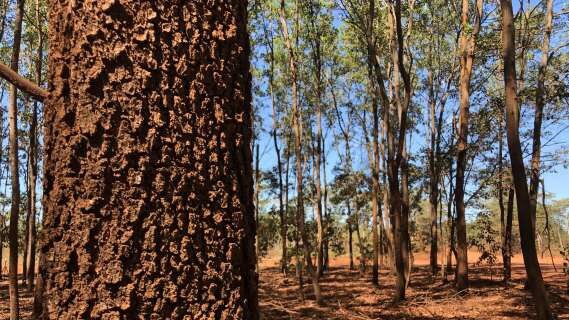Emissions Reduction Fund sidelines farmers in Victoria, SA and Tasmania
Only a tiny fraction of $2.6 billion in federal carbon credit contracts doled out to Victorian businesses have flowed to farmers. We reveal whose pockets the funds have ended up in.

LANDFILL operators, not farmers, have gained 97 per cent of the lucrative carbon credit contracts doled out to Victorian businesses under the Federal Government’s $2.6 billion Emissions Reduction Fund.
The fund, which was first branded the Carbon Farming Initiative, was opened up to a vast array of businesses in 2015, allowing them to bid to deliver carbon credits, worth $10.23 to $16.14 each, in return for projects that curb emissions.
When the CFI was originally established by former Labor Agriculture Minister Joe Ludwig in 2011 it was meant to be “a voluntary carbon offset scheme that will financially reward farmers and landholders for reducing carbon pollution in the land sector and from legacy waste emissions”.
But of the 6.67 million credits doled out to Victorian businesses to date, the Federal Government’s Clean Energy Regulator has awarded 6.49 million to landfill and waste management companies, with almost 70 per cent of those going to one landfill biogas company — LMS Energy.
Agriculture has won just 137,497 of the Victorian ERF credits, while vegetation projects were awarded 43,947 credits, with the last auction run in September last year.
National Farmers’ Federation chief executive Tony Mahar called for improvements to the ERF methodologies, especially in regard to access for smaller farmers, as well as “clearly and fairly recognising the role agriculture plays are important priorities”.
Landfill projects have also sidelined agriculture in South Australia and Tasmania, where waste-to-biogas projects have won the majority of ERF contracted carbon credits, gaining credits for burning and converting methane from rotting rubbish into CO2.
Given methane is about 25 times more potent as a greenhouse than CO2, it means for every tonne of methane combusted, 24 carbon credits can be created.
Of the 1.27 million credits contracted out to South Australian businesses, just over a million credits have gone to landfill biogas projects, with agriculture and vegetation projects picking up 195,730.
Again, LMS Energy picked up almost 400,000 of the state’s landfill credits.
In Tasmania landfill operators won 832,574 of the 1.5 million credits in auctions running from 2015 to September last year, with LMS winning 496,212 of those credits.
The Federal Government is about to provide a further $2 billion for carbon credit auctions, starting this April, after rebranding the scheme the Climate Solutions Fund.

A spokesman for the Clean Energy Regulator, which manages the fund, said “the market determines private sector investment in projects to reduce emissions” with the government aiming to “purchase the maximum abatement at lowest price”.
But critics of the scheme say it is flawed and so complex many sectors just can’t access it.
University of Melbourne Law School fellow and Climate Council researcher Tim Baxter said all emissions reduction projects were meant to be new, not already required under state laws and not able to claim other government funding to undertake the contract.
Yet his research showed many landfill operators’ biogas plants “were fully operational long before the ERF was even conceived”.
“There’s a whole bunch that are also required under (state) law and are getting funding.”
However, changes in the original Act meant landfill operators are not acting illegally.
Mr Baxter said the original Carbon Farming Initiative Act (2011), upon which the current fund is based, clearly stated a project must be in addition to what is already required under exiting state or federal laws.
However he said the Act had been subverted by regulations that allowed carbon contracts to be issued as long as the proponent was a landfill gas operator.
In NSW and Queensland the bulk of the almost 44 million of credit contracts issued have gone to vegetation projects – 33.5 million.
Landfill operators gained 9.9 million of the contracted credits.
In Queensland 21.5 million credits have been issued since 2015, with 12.3 million going to vegetation projects, while landfill won contracts for 5.5 million.
LMS Energy chief commercial officer James McLeay said the company’s technology captured and destroyed harmful greenhouse gases produced by waste that would otherwise be emitted into the atmosphere – “this makes a significant contribution to Australia’s emissions reduction goals”.
“It is important to note that LMS does not own or operate any landfills,” he said. However the ERF contracts are listed under the company’s name.
“The landfill gas methodology has, and continues to be, a critical policy tool to drive emission reductions from the waste sector,” Mr McLeay said.
MORE


